
John Nance Garner III, known among his contemporaries as "Cactus Jack", was an American Democratic politician and lawyer from Texas. He served as the 39th speaker of the United States House of Representatives from 1931 to 1933 and as the 32nd vice president of the United States under Franklin D. Roosevelt from 1933 to 1941. Garner and Schuyler Colfax are the only politicians to have served as presiding officers of both chambers of the United States Congress as speaker of the House and vice president of the United States.
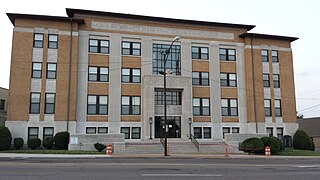
Pope County is a county in the U.S. state of Arkansas. As of the 2020 census, the population was 63,381. The county seat is Russellville. The county was formed on November 2, 1829, from a portion of Crawford County and named for John Pope, the third governor of the Arkansas Territory. Pope County was the nineteenth county formed. The county's borders changed eighteen times in the 19th century with the creation of new counties and adjustments between counties. The current boundaries were set on 8 March 1877.
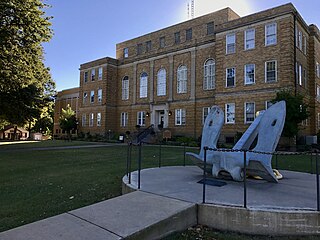
Faulkner County is located in the Central Arkansas region of the U.S. state of Arkansas. As of the 2020 census, the population was 123,498, making it the fifth most populous of Arkansas's 75 counties. The county seat and largest city is Conway. Faulkner County was created on April 12, 1873, one of nine counties formed during Reconstruction, and is named for Sandford C. Faulkner, better known as Sandy Faulkner, a popular figure in the state at the time.

Cephas Washburn was a Christian missionary and educator who worked with the Cherokee of northwest Arkansas and eastern Oklahoma. He later worked to establish churches in Arkansas.
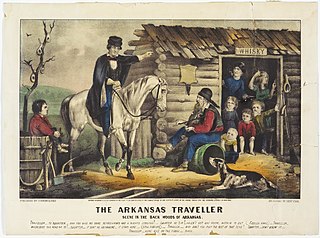
Edward Payson Washburn also known as Edward Payson Washbourne, was an American painter. He was the son of Christian missionary Cephas Washburn. He is best known for his painting, The Arkansas Traveller (1856). During the Antebellum-era, he was one of the most notable painters in the state of Arkansas.

Sandford C. Faulkner, better known as Sandy Faulkner, was an American planter, raconteur and fiddler who personified the mid-19th century folk song "Arkansas Traveler," for which he received writing credit. It has since gone on to become the official state historic song of Arkansas.

John Sevier was an American soldier, frontiersman, and politician, and one of the founding fathers of the State of Tennessee. A member of the Democratic-Republican Party, he played a leading role in Tennessee's pre-statehood period, both militarily and politically, and he was elected the state's first governor in 1796. He served as a colonel of the Washington District Regiment in the Battle of Kings Mountain in 1780, and he commanded the frontier militia in dozens of battles against the Cherokee in the 1780s and 1790s.

A log cabin is a small log house, especially a less finished or less architecturally sophisticated structure. Log cabins have an ancient history in Europe, and in America are often associated with first-generation home building by settlers.
Arkansas Traveler or Arkansas Traveller may refer to:
Arkansas is a Southern state of the United States. Arkansas's musical heritage includes country music and various related styles like bluegrass and rockabilly.
James White was an American pioneer and soldier who founded Knoxville, Tennessee, in the early 1790s. Born in Rowan County, North Carolina, White served as a captain in the county's militia during the American Revolutionary War. In 1783, he led an expedition into the upper Tennessee Valley, where he discovered the future site of Knoxville. White served in various official capacities with the failed State of Franklin (1784–1788) before building James White's Fort in 1786. The fort was chosen as the capital of the Southwest Territory in 1790, and White donated the land for a permanent city, Knoxville, in 1791. He represented Knox County at Tennessee's constitutional convention in 1796. During the Creek War (1813), White served as a brigadier general in the Tennessee militia.

"The Arkansas Traveler" is a mid-19th century folk song popularized by American singer and guitarist Mose Case. It is based on the composition of the same name by Sandford C. Faulkner. The score was first published by W. C. Peters in 1847 under the name "The Arkansas Traveller and Rackinsac Waltz". It was Arkansas' state song from 1949 to 1963, and the state historic song since 1987. The song has many versions, recorded by many people, and it has also inspired the creation of the children's song, "baby bumblebee" which shares the same tune.
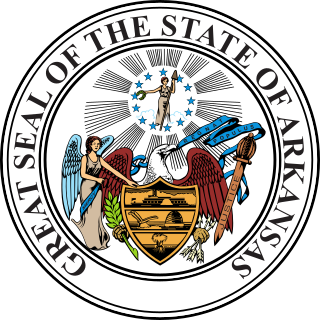
The history of Arkansas began millennia ago when humans first crossed into North America. Many tribes used Arkansas as their hunting lands but the main tribe was the Quapaw, who settled in the Arkansas River delta upon moving south from Illinois. Early French explorers gave the territory its name, a corruption of Akansea, which is a phonetic spelling from the Illinois language word for the Quapaw. This phonetic heritage explains why "Arkansas" is pronounced so differently than the U.S. state of "Kansas" even though they share the same spelling.

The dogtrot, also known as a breezeway house, dog-run, or possum-trot, is a style of house that was common throughout the Southeastern United States during the 19th and early 20th centuries. Some theories place its origins in the southern Appalachian Mountains. Some scholars believe the style developed in the post-Revolution frontiers of Kentucky and Tennessee. Others note its presence in the South Carolina Lowcountry from an early period. The main style point was a large breezeway through the center of the house to cool occupants in the hot southern climate.

The 1992 United States presidential election in Arkansas took place on November 3, 1992, as part of the 1992 United States presidential election. State voters chose six representatives, or electors to the Electoral College, who voted for president and vice president.
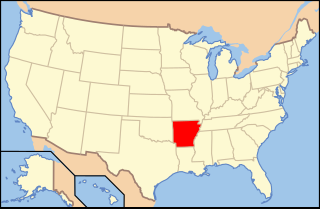
The culture of Arkansas is a subculture of the Southern United States that has come from blending heavy amounts of various European settlers culture with the culture of African slaves and Native Americans. Southern culture remains prominent in the rural Arkansas delta and south Arkansas. The Ozark Mountains and the Ouachita Mountains retain their historical mount. Arkansans share a history with the other southern states that includes the institution of slavery, the American Civil War, Reconstruction, Jim Crow laws and segregation, the Great Depression, and the Civil Rights Movement.

John Gray Lucas was a lawyer and a state legislator in Arkansas during the early 20th century. He was appointed Assistant U.S. attorney in Cook County in 1934. Born in Marshall, Texas, in 1864, he eventually moved to Pine Bluff, Arkansas. He graduated from Branch Normal College of Arkansas Industrial University. He then got his law degree from Boston University School of Law in 1887, graduating with honors as the only African-American student in his class. He moved to Chicago.

The 1916 Arkansas gubernatorial election was held on November 7, 1916.
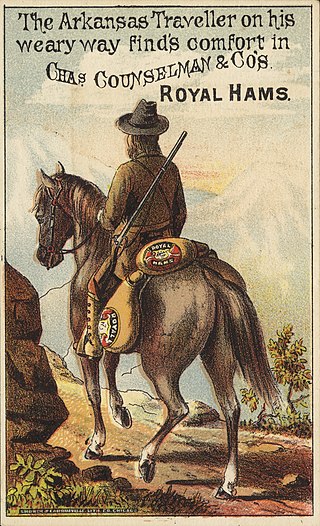
The Arkansas Traveler, or Arkansas Traveller, is a figure of American folklore and popular culture from the first half of the 19th-century. The character is said to have originated with Sandford C. Faulkner.
Archibald Hamilton Rutherford was a public official, state legislator, and Treasurer of Arkansas.
















